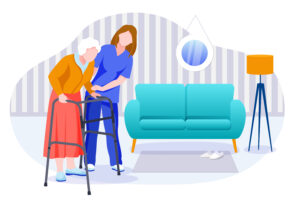A new evaluation reveals that ‘Hospital at Home’ (HaH) services, also known as virtual wards, have effectively treated thousands of patients and reduced pressure on other NHS services. The independent evaluation carried out in 2023/24 assessed the impact and implementation across the Buckinghamshire, Oxfordshire, and Berkshire West (BOB) Integrated Care System (ICS) of HaH services which are delivered by six healthcare providers.
These services have a total of 500 adult beds and 12 paediatric beds and are delivered by multi-professional teams. They aim to prevent hospital admissions and support early discharge by providing hospital level support, care and treatment, either virtually or in person for up to 14 days in a patient’s home or care home. The evaluation, carried out by Health Innovation Oxford and Thames Valley, found that between September 2023 and January 2024 the HaH services effectively managed a variety of acute illnesses and exacerbations of chronic conditions in adults including chronic obstructive pulmonary disease (COPD), COVID-19, heart failure, pneumonia and urinary tract infections, and provided palliative care for those with advanced or life-limiting illnesses. The children were primarily treated for acute bronchiolitis.
The evaluation found that the HaH intervention significantly reduced the need for emergency services within 28 days of discharge, particularly for older patients and those with longer HaH stays. Emergency admission rates fell by 73% for adults and 85% for children. There was also a reduction in ambulance journeys of 69% (83% for children) and a fall in calls to 111 of 58% (85% for children). Also, most patients (83% of adults and 97% of children) were discharged with no new or additional needs for support from health and social care.
Rachael De Caux, Deputy Chief Executive and Chief Medical Officer at BOB Integrated Care Board (ICB), said: “We are proud to offer so many people within our system the choice to receive care at their place of residence instead of a hospital setting.
“Our Hospital at Home and Virtual Ward services delivered by our local partners are part of a suite of community services which now treat unwell patients with a range of conditions outside the hospital setting, including providing assessments, medications, scans and blood tests where required.
“We have valued the partnership with the Health Innovation Network Oxford and Thames Valley to provide an independent report to guide our continued learning and enable us to prioritise our improvement areas.”
Tracey Marriott, Director of Clinical Innovation Adoption at Health Innovation Oxford and Thames Valley, said: “This programme highlighted the incredible power of collaboration, with highly engaged clinical teams rapidly expanding an innovative service delivery model that helps to address challenges in emergency care.
“The strong, forward-thinking leadership from BOB ICB, combined with the dedication of the HaH teams, provided invaluable insights that enabled us to conduct the evaluation and consolidate recommendations that will shape the future of this model of care for BOB ICS and other NHS organisations nationwide.”
The HaH services provided care to 6,500 adults – many of them older people – and 320 children, adding up to a total of 46,685 bed days for adults and 715 bed days for children. HaH services were primarily focused on avoiding hospital admission (60% of referrals), and the majority of patients (88%) were treated at home rather than in care homes.
On average, adult patients had a HaH length of stay of seven days, were typically older (average age of 74), were moderately frail and a notable proportion lived alone (35%). The children were very young with the average age being below one year. They had a shorter average stay of two days. Both adults and children had low readmission rates to HaH services within 28 days (below 10%).
There was positive feedback from HaH staff – but some challenges and training needs were also identified. Further evaluation is needed to determine the longer-term impact of these services and to understand how variations in service delivery affect patient outcomes.
Hospital at Home is one of several complementary services treating acutely unwell patients in the community in Buckinghamshire, Oxfordshire and Berkshire West.


